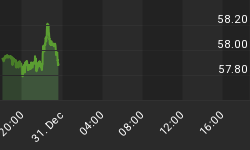The quick drop in silver this week seemed to have caught a few off guard to the extent that talk of manipulation pervaded the air. However, The Silver Analyst had already suggested a sell off in silver last weekend to subscribers and was not taken by surprise by current events. However, in the light of that weekend comment about a silver price correction, I was asked a question about whether to sell silver stocks. That is a natural enough question which I answered but which I want to expand on here. If like me you believe we are still in a primary bull market for silver, then you may want to consider one or two matters before churning a stock or bullion position.
Let us suppose you somehow knew your favourite silver stock was about to correct by 20% but you were not sure of the exact day, only that it would do so in the next week or so. Should you sell looking to buy in at a lower price? The obvious answer seems to be yes, but look at the things you have to contend against.
- You will not bail out at the exact top unless you are lucky.
- You will not re-enter at the exact bottom unless you are lucky.
- The bid-ask spread on a stock guarantees a loss even if you sold and bought in the same minute.
- The broker fees ensure further erosion of a re-entry profit.
So let us suppose your stock is going to lose 20% and will drop from $20 to $16. Let us further suppose that you get the exit and re-entry correct to within 5%. Furthermore, let us assign a bid-ask spread of 2% either way on this stock. This is not an easy number to fix; a recent check of 20 silver stocks gave spreads between 1% and 8%. But in plain English, for a $20 price, you get $19.60 when you sell the stock but it costs you $20.40 to buy it back.
Let us finally assume that your broker fees plus any taxes will be $10 to sell your stock and another $10 to buy them back. That is not so bad.
We will now assume you have 500 shares notionally valued at $10,000 (based on a $20 quote) that you wish to sell. The stock hits a price of $20 and you exit at 5% below this at $19. The bid on this is $19 - 2% or $18.62 and your broker charges $10 for the privilege. You are left holding $9300.
The price drops to $16 and you get back in at $16.80 and the ask price is 2% higher at $17.14 plus another $10 fee means that you can afford to buy 542 shares i.e. ($9300 - $10)/$17.14. So your net gain for the whole exercise is 42 extra shares. That seems worth the effort you may reply. Now suppose you are only 10% accurate in your exit and re-entry. Now you will end up with 490 shares or 10 less than you started with and the whole exercise has been a waste of time. Evidently timing is a prime factor here.
If you can time your exits and entries to a high degree and the share price drops more than 20%, it could be well worth it - but that is a big if. You can repeat the exercise for bullion but the rewards could be less as bullion can drop less than stocks in a correction and the bid-ask spreads are higher.
I sent the gist of the above to subscribers early this week but after that I decided to put back into silver some science rather than the speculation we so often see about trading the gray metal. I applied what I knew about mathematics and came up with a formula whereby silver stock and bullion investor can risk assess whether to churn their positions or sit still. The formula is as follows:
Ne = Nb x (Pb/Pe) x A² x S²
So we have Ne, which is the number of shares one will have at the end of the exercise, and Nb is the number of shares held at the beginning. The aim is obviously to have Ne greater than Nb. Continuing, Pb is the price of the stock at its peak prior to the downturn and Pe is the price when the correction ends and the stock bottoms out.
Our variable A is the accuracy of one's ability to predict an exit and re-entry point. So, in our first example above, we assumed the investor was within 5% of the top and bottom. That is a 95% accuracy and this would mean A would equal 0.95. The formula then squares that number.
Finally, S is the bid ask spread on each side. In our example, we took a 2% spread either side of the quoted price. Therefore, S would equal 0.98 (100% - 2%). Again we square that number.
One thing we have omitted from this equation is the brokerage fees. Including these complicated the formula too much and so long as we used a large value for the shares such as $10,000, it had little impact on the final result. So, if we feed the numbers from our original example we get the following formula:
Ne = 500 x (20/16) x 0.95² x 0.98²
Giving us an answer of Ne = 541.7 which agrees well with our manually calculated 542 shares. I encourage anyone thinking about selling to do the sums first based on their own expectations and costs and experiment with this formula in their portfolio risk assessment.
Further analysis of silver can be had by going to our silver blog at http://silveranalyst.blogspot.com where readers can obtain a free issue of The Silver Analyst and learn about subscription details. Comments and questions are also invited via email to silveranalysis@yahoo.co.uk.
















